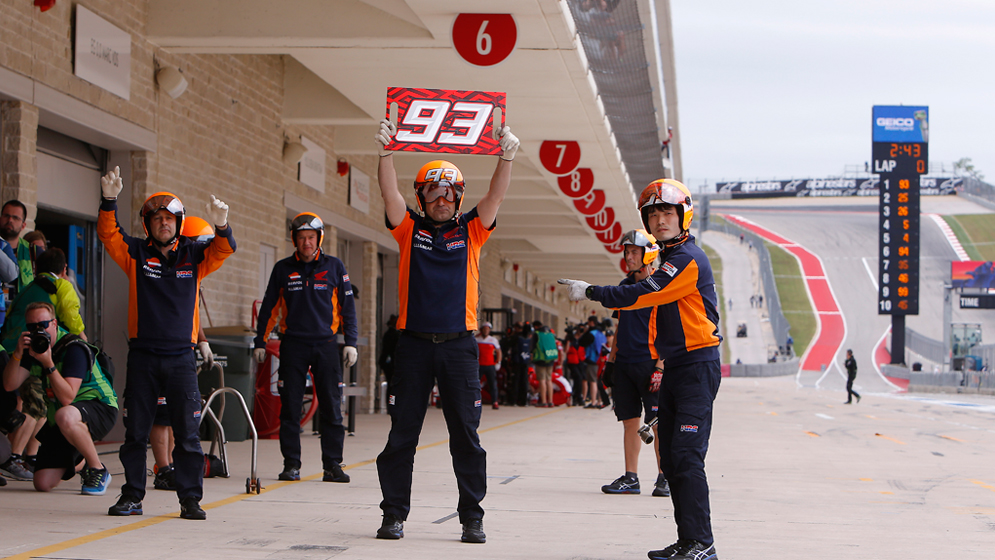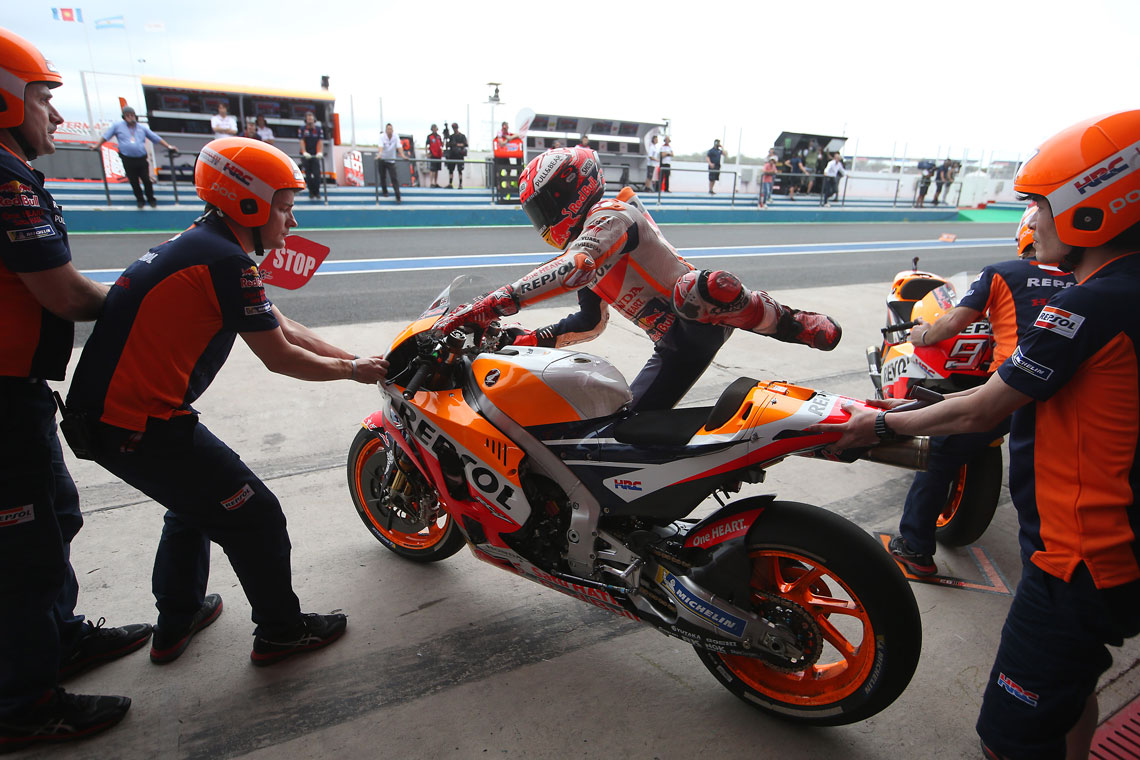Team mechanics are in charge of replacing all these parts. These professionals work tirelessly at every GP, paying great attention to every little detail.
The RC213V used by Marc Márquez and Dani Pedrosa is one of the most advanced pieces of motor vehicle engineering on Earth. This bike requires completely different maintenance to other apparently similar ones like the Honda CBR. It also differs a great deal from the way two-stroke bikes were maintained back in the days of the 500cc world championship. As the engines in these bikes were more rudimentary, they had to be taken apart completely so that each part could be cleaned… and this had to be done at the end of every GP day!
These days, with the rules stating that engines have to be sealed, and thanks to the advances in technology, such exhaustive maintenance is no longer necessary (or permitted). However, many parts are subject to heavy wear and need to be replaced frequently to avoid accidents. Assuming a MotoGP bike has around 2,000 separate parts and components, around 200 of these require high maintenance and control.
Tyres: These are changed before every session, and sometimes during sessions too, if required. MotoGP tyres don’t last much longer than the distance covered in one race (around 120 km).


Oil: The oil level is checked at each session and topped up if needed, though it’s drained completely and replaced with a new lubricant on race day. The oil used by MotoGP bikes has special qualities as it’s specifically formulated to get the most from the engine. After each GP, the oil is taken out so the bike can be transported, meaning every weekend starts with fresh oil.
Cooling system: The coolant is checked at every session and replaced completely at the start of every day. At the end of every session, the radiator and cooling pipes are cleaned and checked for any damage or imperfections that may have occurred.
Chain and sprockets: These parts are checked, greased, and tightened after every session, and they are only replaced if they need to be. They have a service life of around 500 km, which is equivalent to one GP weekend. The sprockets, both front and rear, last almost twice as long, so they’re normally replaced at every second GP.





Clutch: Although the clutch is taken apart after almost every session to check the clutch plates, springs, and other components, it has a service life of around 1,000 km. After sessions for practicing race starts, the whole clutch system is completely replaced.
Brakes: The brake discs and pads can be reused if they aren’t too worn from previous sessions. They have an estimated service life of between 800 and 1,000 km. The brakes are also bled before each session. The calipers are good for a whole season, but the teams rely on the suppliers to provide an official maintenance service that keeps them in top condition.
Wheels: The wheels can last around 2,000 km before they need replacing, but they’re usually changed at every second race, like the sprockets.
Engine: Marc and Dani each have 7 engines for the entire season. In compliance with the rules, the engines are sealed, preventing any internal maintenance or modifications. When they’re replaced, the whole engine is taken out and a new one put in; this decision is entirely up to the team.
Sensors: As these are electronic parts, they’re not subject to extreme wear and tear, but the sensors can deteriorate due to their working conditions. For maximum performance they’re usually replaced at every fourth GP, which is a distance of about 2,000 km.





Air filter, injection systems, bearings, and spark plugs: All of these parts are checked after every session and replaced when necessary, either because of visible wear or because the electronics have detected a drop in performance.
Fairing: Although the fairing can last for several GPs, or even an entire season if there are no collisions that dent or break it, it’s usually checked and cleaned after every session.
Suspension: The suspension setup is adjusted several times over the course of a GP weekend to test out different configurations. The chassis and swingarm last a long time, only needing to be replaced about halfway through the season. Replacing these parts might also depend on other related factors, like developing the bike.
Handlebars and seat: These two parts come into contact with the rider and are generally changed once a season in MotoGP. It’s always nice to have a new seat, even if you’re going to be hurtling round a circuit.





It’s the team mechanics that are in charge of replacing all these parts. These professionals work tirelessly at every GP, paying great attention to every little detail. A look at the results is enough to confirm what a good job they’re doing, as the Repsol Honda team’s RC213V has shown itself to be one of the fastest on the grid.


 Join Us
Join Us  Join Us
Join Us 